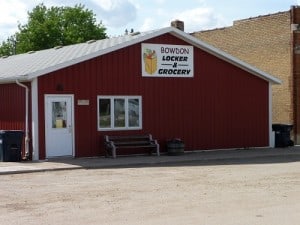
Bowden grocery by gmuske
It’s a growing trend. Online stores selling to your consumers. And the trend is growing.
Currently books, electronics, clothing, etc. are the more popular items being sold. But the available categories are expanding rapidly.
One of the growing categories is online grocery sales. This took the front page when Amazon purchased Whole Foods. But the trend was already on its way even before.
Today I read an article connecting online grocery sales heading in another direction – home delivery. It is not only home delivery but same-day delivery. As the article notes, groceries are second in terms of the most quickly wanted products following restaurant orders.
So what might this mean for rural grocers? It can go three ways.
Perhaps it would have little or no impact. But probably not.
I suspect it will, or already does, impact your bottom line. Across the country, I have rural state friends who indicate they routinely buy grocery items as well as other items you find in those stores. What a dismal outlook.
Yet, there is a third thought. How many of you see it as an opportunity?
I do for several reasons.
First, in earlier ecommerce grocery efforts, deliver costs were high. Yet, your stores operate in small communities meaning you are close to the customer. You can do deliveries. And keep your deliver costs lower. What does it cost to ship a can of fruit from Minneapolis or California as opposed to going only 10 blocks or 10 miles.
Second, as noted, people want grocery items quickly. Again, you live in the community giving you a substantial head start. In all likelihood, you will start the business offering the items you normally carry. You could have the products in the customer’s home before that online competitor gets an order to its warehouse.
Third, you might build on another fast growing trend, the “meal in a box” idea with all the ingredients and the recipe to make it. This would be a little more trouble to put together but you may have an audience that would appreciate the time you save them. Some frozen steaks, a couple of potatoes and a bag of salad could be one and you might just offer a ballpark special – hot dogs, buns, beans, potato chips and lemonade. It’s corny but if it saves a run to the store, why not. (Just check with health department regulations first).
The fourth idea builds on #3 by connecting with local foods. Maybe your deliver point is from your own booth at the farmer’s market. Based on what the vendors will have any week, offer a recipe and the items need to complete it along with some fresh and local products. Or taking this idea in a slightly different direction, connect with your local CSA (community supported ag) producers. As they provide their box of produce, you offer that box of “fixins” in order to build the rest of the meal or meals.
Finally, use the delivery idea to respond to people work out of town or work during the hours you store is normally open. Let them place their order and then make deliveries during

Photo (CC) by Fabian Ortiz, on Flickr
the evening or other times they might be home. Volunteers or a high school student could make several deliveries in a couple of hours. And it can all happen when your store is technically closed. One thing to remember though, you don’t need to do this for nothing. Taking a line from Field of Dreams, “people will pay” for this kind of service.
Actually, none of these ideas have to be done for free. A small charge will not keep everyone away. It will stop some, but if you do it well, people will be your best ambassadors in getting other people to try it.
So face the challenge. Look at online sales and delivery as an opportunity. Make your rural grocery the electronic commerce center on the prairie.










